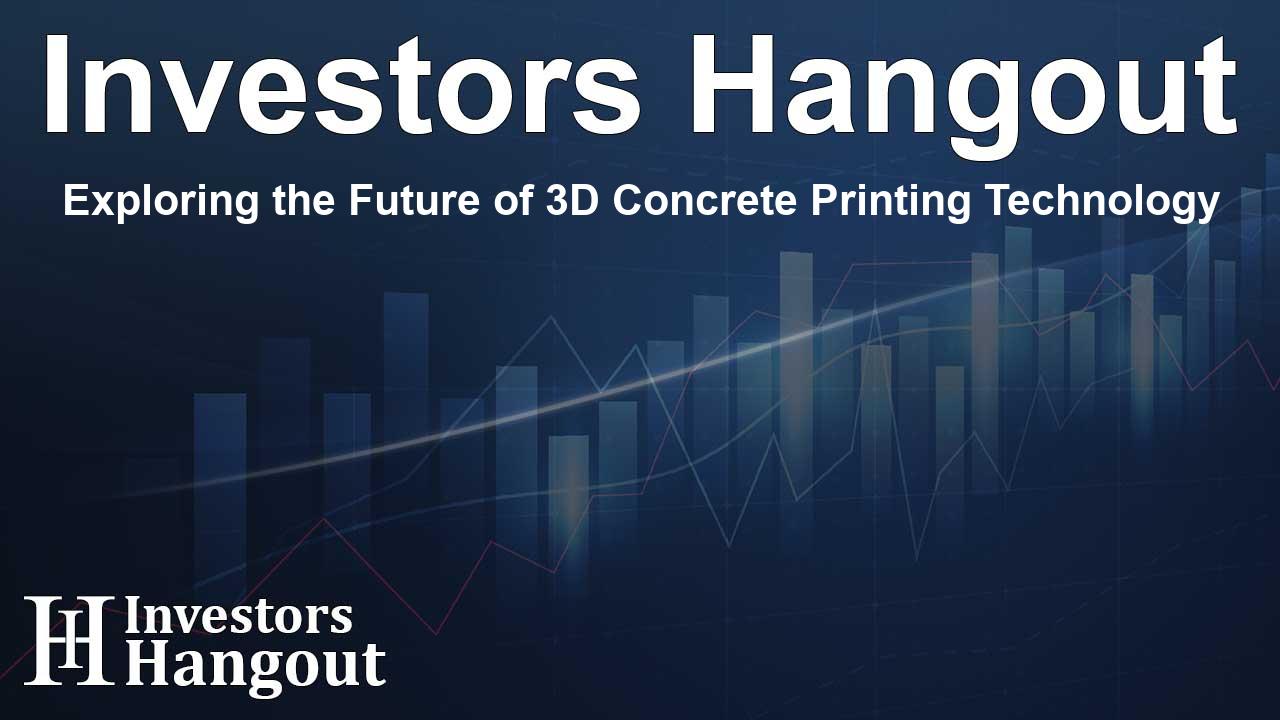Exploring the Future of 3D Concrete Printing Technology

The Expansion of the 3D Concrete Printing Market
The global market for 3D Concrete Printing is projected to reach USD 3,686.29 million by 2033, growing at an impressive compound annual growth rate (CAGR) of 55.60% from 2024 to 2033. This remarkable growth is largely driven by the rising demand for intricate architectural designs and the various benefits this technology offers.
Exploring 3D Concrete Printing Technology
3D Concrete Printing marks a significant advancement in construction technology, enabling the creation of building components and entire structures using sophisticated 3D concrete printers. This technology employs various methods, including extrusion, which utilizes materials like wax, cement, and additive welding. Companies worldwide are beginning to recognize the potential of 3D printing, experimenting with different concrete mixtures and printing machines to boost efficiency.
Benefits of 3D Concrete Printing
The benefits of 3D concrete printing are extensive. Notably, it allows for the creation of detailed architectural designs with enhanced precision. Additionally, this technology supports sustainability by minimizing material waste and reducing health and safety risks on construction sites. Its current applications range from building floors and roofs to producing pavements and structural slabs, demonstrating its versatility.
Investments and Research in the Industry
Major players in the industry are making substantial investments in research and development to create advanced printing machinery suitable for large-scale operations. By integrating 3D concrete printers into semi-automated production lines, they can construct more complex buildings, thereby improving overall efficiency.
Obstacles in the 3D Concrete Printing Market
Despite its promising potential, the 3D concrete printing market faces several challenges regarding widespread adoption. In many areas, there is a lack of awareness about the technology, which hinders its acceptance. Safety concerns also discourage individuals and construction companies from moving away from traditional construction practices. These obstacles must be addressed to facilitate market growth.
Market Segmentation and Key Insights
The 3D concrete printing market is varied, with the printing services segment commanding the largest market share at 60.44% in 2023. This dominance is linked to the technology's effectiveness in building construction and automating production lines. Moreover, the extrusion-based technique has emerged as a leader in this segment, capturing 69.43% of the market share in the same year. Additionally, the building segment holds 63.13% of the market share, driven by the need for affordable housing and the trend toward complex architectural designs.
Regional Overview and Market Trends
The market spans several regions, including North America, Europe, Asia Pacific, and the Middle East and Africa. Europe currently leads the market, thanks to rapid residential construction activities and a growing demand for affordable housing solutions. Likewise, the Asia Pacific region, particularly due to rapid urbanization in developing countries, continues to exhibit growth potential driven by an increasing need for various infrastructure projects.
Competitive Landscape in 3D Concrete Printing
The competitive landscape of the 3D concrete printing market features key players such as Winsun, XtreeE, Monolite UK, ApisCor, and Sika. These companies are instrumental in advancing technology through innovation and strategic partnerships.
About The Brainy Insights
The Brainy Insights is a respected market research organization committed to providing actionable insights through data analytics, helping businesses improve their strategic decision-making. We specialize in both customized and syndicated reports across various sectors, focusing on efficiently meeting client needs.
Contact Information
Avinash D
Head of Business Development
Phone: +1-315-215-1633
Email: sales@thebrainyinsights.com
Web: http://www.thebrainyinsights.com
Frequently Asked Questions
What is driving the growth of the 3D concrete printing market?
The growth is primarily driven by the ease of constructing complex designs, sustainability, waste reduction, and increased efficiency.
What are the major segments in the 3D concrete printing market?
The major segments include printing services, materials, techniques, and end-users, with printing services holding the largest market share.
Which regions are showing significant growth in the 3D concrete printing market?
Europe and the Asia Pacific regions are experiencing significant growth due to an increase in construction activities and urbanization.
Who are the significant players in the 3D concrete printing market?
Key players include Winsun, XtreeE, Monolite UK, and Sika, all of whom are pushing the technology forward.
What challenges does the 3D concrete printing market face?
The market faces challenges such as limited awareness, safety concerns, and resistance to change from traditional construction methods.
About The Author
Contact Olivia Taylor privately here. Or send an email with ATTN: Olivia Taylor as the subject to contact@investorshangout.com.
About Investors Hangout
Investors Hangout is a leading online stock forum for financial discussion and learning, offering a wide range of free tools and resources. It draws in traders of all levels, who exchange market knowledge, investigate trading tactics, and keep an eye on industry developments in real time. Featuring financial articles, stock message boards, quotes, charts, company profiles, and live news updates. Through cooperative learning and a wealth of informational resources, it helps users from novices creating their first portfolios to experts honing their techniques. Join Investors Hangout today: https://investorshangout.com/
The content of this article is based on factual, publicly available information and does not represent legal, financial, or investment advice. Investors Hangout does not offer financial advice, and the author is not a licensed financial advisor. Consult a qualified advisor before making any financial or investment decisions based on this article. This article should not be considered advice to purchase, sell, or hold any securities or other investments. If any of the material provided here is inaccurate, please contact us for corrections.
